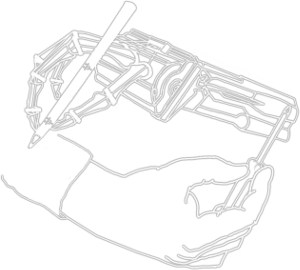
My research enables the design and building of robots for rehabilitation, prosthetics, and assistive applications. With growing numbers of elderly patients and veterans in the US, there is a critical need for innovative solutions that improve patient rehabilitation, and my vision is to employ robotics to help. My research program focuses on two major research streams to further this vision: i) Robotic Hand Design and Control, and ii) Wearable Robotic Systems.
The design challenges and opportunities for robots attached to the human body are fundamentally different from those associated with typical industrial robots working in isolated and structured environments. To address these, my research is informed by results from experiments with human subjects, simulations of human musculoskeletal systems, and mathematical analyses of human-robot interactions. Contributions from my two research streams include novel understanding of biomechanical and neural control of the human hand, robotic fingers with human-like manipulation capabilities, and novel wearable robotic devices and control algorithms for delivering therapy.
My research group has embarked upon a research trajectory that is both theoretically grounded and application-oriented. Our three main goals are to gain a deeper understanding of human motor control and underlying mechanisms of motor recovery; to design robots that work with humans in remote, dangerous and sensitive environments; and to develop wearable robots for recovery, entertainment, and improvement in patient’s quality of life. We are collaborating with clinicians (MDs and therapists), neuroscientists, researchers from government labs (NASA, DoE, DoD, and VA), and industry partners, in addition to academic labs, to achieve our exciting and integrative goals.

